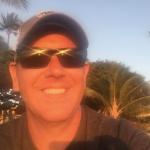The other day I was chatting with friend and digital strategy/social media expert Ken Burbary on the phone. He was advising a colleague on some good community-building techniques to consider when all of the sudden the following words came out:
"You have to find your cheeseheads."
What? I did a double-take (or at least the conference call equivalent) and asked him to repeat himself.
I had heard him correctly.
Ken lives in Michigan. Michigan is not far from Wisconsin. Wisconsin is where a lot of cheese is made. Wisconsin also has an (American) football team called the Green Bay Packers.
The biggest fans of the Green Bay Packers wear wedges of cheese made out of foam on their heads to show their support for the team. When someone will wear a big wedge of cheese on their head to show support for their team, that means they are a pretty big fan.
So Ken was saying that good community catalysts seek out and empower the biggest community supporters and advocates—the cheeseheads.
I found a fantastic blog post, written last fall by a colleague of Ken's named Rachel Happe, entitled Cheeseheads. The post, which appears on The Community Roundtable website, explains in more detail the concept of how to engage your community's cheeseheads. I won't repeat Rachel's advice here, but instead want to ask a follow-on question:
Sitting at a football game at Lambeau Field, it's pretty easy to spot most of the biggest fans. They have foam cheese on their heads.
But what you do when a community isn't the foam-hat-wearing kind? How do you find and empower the people who are the community's energy source? Here are a few thoughts from me on how to find the biggest community advocates when they aren't in plain view.
1) Find the people who bring ideas more often than opinions.
Whether on a mailing list, a conference call, or at a meeting or event, it is pretty easy to tell who is active in a community.
But activity is a red herring.
Simply because someone is an active participant does not mean they are a key influencer in the community. I tend to look not for the people who are talking or emailing the most, but for the people who are generating ideas.
In healthy communities, lots of folks are generating ideas. In unhealthy communities, a few people are generating ideas, and others are shooting them down.
In my favorite communities, those run the open source way, there is a meritocracy of ideas where the best ideas always have a chance to win. My good friend and business partner David Burney taught me that the best way to generate the best idea is to generate a lot of ideas.
So when you are joining or starting a community and are trying to figure out how to help, look first for the people who are generating a lot of ideas. Or better yet, become a member who is generating a lot of ideas yourself.
2) Find the people who are doing more than saying.
In my experience there is one thing that, in the long run, trumps power and influence in communities:
The ability to actually do stuff.
It sounds obvious, but I'm often amazed when I observe communities when 90% of the members sit around talking about what they are going to do, and one or two people are doing most of the work. These workers often speak softly, but carry big sticks.
Finding and helping the people who are actively doing the work is one of the best ways you can truly become a catalyst in a community.
Can you provide these people with resources or other assistance that will help them scale their efforts? Give them money, tools, jobs, publicity, your own time, or whatever else you or your organization has at your disposal—every bit helps.
Can you remove distractions that are getting in their way? Sometimes the people who do the work would like no greater gift than breathing room.
And, of course, also consider becoming a productive member of the community doing real work.
Those are a few simple ideas from me. If you have other ideas for ways to find and engage the cheeseheads in a community, I'd love to hear them. Please feel free to add yours in the comments section below.






4 Comments